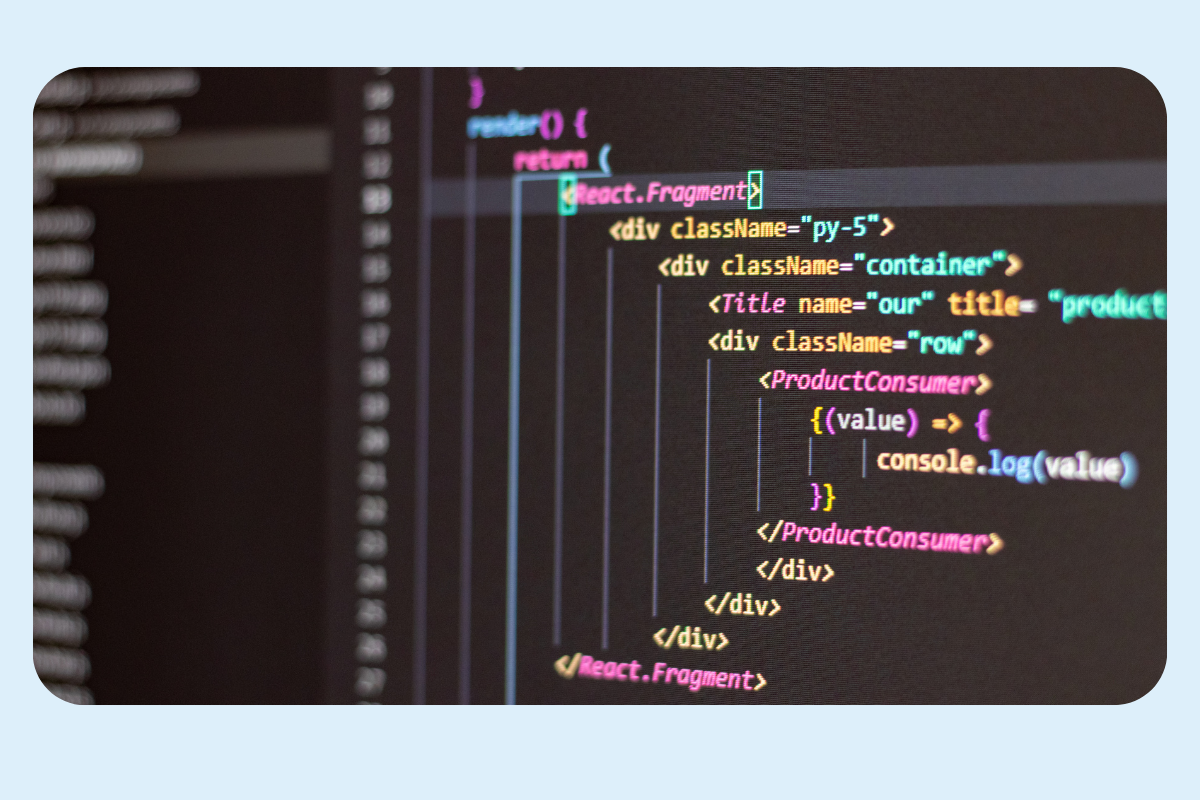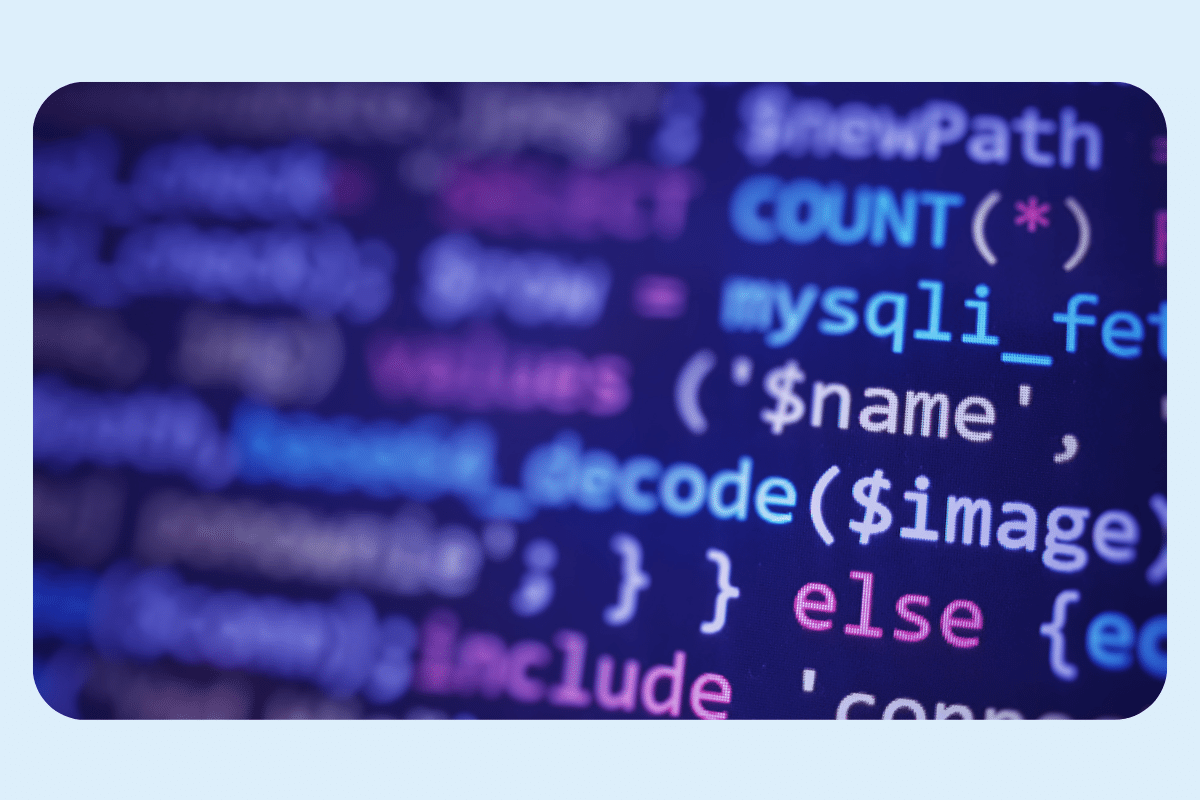
The Most Common Problems in Software Development
Software development is undoubtedly an extremely complex craft.
It requires not only years of experience, and knowledge of countless tools and technologies, but also impeccable interpersonal skills and teamwork.
The software development process can be compared to a big, complex machine – as long as each part is oiled and well-maintained, the machine will fulfill its tasks.
But things do not always go as smoothly as we anticipate, and you are never sure when a certain part of the machine is going to fail, hurting its performance or stalling the process altogether. That’s why anticipating and overcoming challenges is an essential part of being a software developer.
In today’s post, we are going to cover the most common problems and pitfalls that developers face during their everyday work and share some tips on how to deal with them effectively.
Contents
- What slows down the software development process?
- 8 most common software development challenges
- Problem #1 Lack of alignment between a client and a software development company
- Problem #2 Inadequate communication
- Problem #3 Technical debt
- Problem #4 Premature optimization
- Problem #5 Bugs and broken code
- Problem #6 Writing “clever” code
- Problem #7 Security issues
- Problem #8 Performance issues
What slows down the software development process?
The software development process, just like any intricate machine, has its own weak spots.
Generally, we can point out three main groups of factors that can significantly hinder the speed of development. When looking for any improvements in the progress of your projects, you should first look into these things:
The scope of the project itself – More robust development projects always involve a multitude of different integration tools, database solutions, and other technologies. On top of that, clients often approach development companies with a laundry list of wanted functionalities – some of which are more advanced than others and some are plainly undoable in a given timeframe and budget.
Technical challenges – Some projects require a little more out-of-the-box thinking and the custom development of bespoke solutions based on advanced and niche technologies. All of that can significantly reduce the speed of the development team, as programmers have to dedicate more time to the prototyping phase.
Structural complexity – Multiple workflows, technologies, and stakeholders involved in the software product development process mean one thing – keeping it all in check can be a huge headache and requires making use of proven software development methodologies and the help of project managers and owners.

8 most common software development challenges
Below we’ve listed eight most common software development challenges as well as some tips and insights on how to deal with them.
You’ve for sure encountered some of them at some point during your work as a software developer. If you didn’t, prepare yourself and know what to expect in more troublesome projects.

Problem #1 Lack of alignment between a client and a software development company
Problem
One thing that has to be established before diving deep into the software development process is a product vision.
Some business executives believe that enterprise software and technology are some kind of a wonder weapon that will improve all aspects of the organization straight off the bat. The thing is that no matter how advanced, technology cannot bring positive change if the product vision is flawed.
What’s probably even more important to software developers themselves, working without a clear product vision, the client will be unable to communicate its core needs to the software development team. It will inevitably lead to all sorts of misunderstandings, especially when it comes to budgets, deadlines, and required functionalities.
Solution
The solution to this problem is, of course, establishing a well-thought-out and clear product vision during the initial meeting with the client.
Creating a product vision for a custom software development project should be a collaborative effort. In the first stages, it is worth getting support from your product managers and business analysts. You can also talk to other teammates, team leaders, and even current and prospective customers.
[Read also: Best Practices for Writing Software Documentation]

Problem #2 Inadequate communication
Problem
Issues with communication in software development projects can manifest themselves in two ways:
- Problems with communication with the client
- Internal communication issues
Regardless of whether your client is located two blocks away or is on another continent – cooperation between all stakeholders is an absolute necessity. Communication breakdowns can lead to serious delays or even an abandonment of the project itself.
The same thing applies to the development team. After all, solving software development challenges often boils down to how well programmers can communicate with one another and share their knowledge.
Solution
To minimize these problems, there should always be a clear channel of communication set up between all stakeholders in the development project (developers, clients and product owners). A good practice is to leverage project management tools, and schedule daily and weekly meetings so that developers can discuss changes made to the project, and share them with the client. It is crucial for both parties involved to be clear about the requirements and document everything that happens during the development project.
Programmers should also ask questions whenever they require clarification about any issue. By taking these measures, miscommunication can be reduced, and the development can proceed smoothly.
[Read also: How to Find Software Developers? 10 Experts Tips]
Problem #3 Technical debt
Problem
Many development projects span months or even years as the software applications grow in size due to the user’s demand.
A lengthy development process can create some serious issues, as complicated methodologies chosen years ago are starting to be a real burden to the development team. This term is more often called technical debt. Read the interview with Michał Borońki, our Senior Java Developer, to learn more.
This financial metaphor illustrates how short-term decisions today, like borrowing money with high-interest rates, can have a paramount impact in the future.
Solution
Just like repaying your financial debts, solving technical debt issues is pretty similar, as the main goal in both situations is the same: stop the bleeding, and pay it off incrementally.
First and foremost, the development team won’t dig their way out if they continue following the same practices they used in the past. Because of that, the first step in solving technical debt issues should be to determine which exact processes and habits have caused issues — in the code or outside of it.
Just like you repay your debt in monthly increments, code improvements should be integrated into every sprint. Carrying this concept even further, technical debt maintenance can be made a regular practice and integrated into the status quo. After all, planning architecture in advance can have a huge impact on technical debt on an ongoing basis.
[Read also: Legacy Software Systems: How to Live with Aging Software Architecture?]

Problem #4 Premature optimization
Problem
In most software development projects these days, a very strong emphasis is being put on the performance and scalability of the code.
Having said that, developers often fell victim to the premature optimization trap. They focus on creating highly optimized and scalable software architecture using new technologies straight, before making sure that their product is economically viable.
A good example of this is a startup that pours immense amounts of resources into building a highly-scalable architecture able to handle millions of users without breaking a sweat.
Don’t get me wrong. Scalability is a valid concern, and it should be taken into consideration, but it should not be a priority at that stage. Before you worry about handling millions of users, you need to make sure that there is a real demand for the product that you are designing.
[Read also: What Is a POC and How to Create a Proof of Concept?]
Solution
Developers at the initial stages of the development process should spend time working on prototyping and designing UI mockups of the product. At first, focus on getting initial feedback from users and later use it to iterate on the final product features and functionalities. After that comes setting up robust and scalability back-end architectures.
Optimization also involves making tweaks and adjustments to the code itself so that the software runs more smoothly.
As a developer, you should not worry about optimizing all of your code all the time. Remember that the Pareto principle also applies to software development. It means that the application generally spends 80% of its time running 20% of the code.
Once software development teams can determine which 20% of the code is really important, they can focus their optimization efforts on that part of the code, as it will yield the biggest overall improvements.
Problem #5 Bugs and broken code
Problem
Let’s establish one thing – perfect code doesn’t exist. There are always going to be bugs and broken parts of the code in some capacity.
Having said that, the main objective for software developers should be minimizing their occurrence throughout the project. Flawed and buggy software can significantly affect the performance of the code and end-user experience. Both will be detrimental to the business in the long run.
What’s the most common cause of software bugs? Well, there are numerous factors at play but generally, it is the under-scoping of the software development project that is the main culprit.
If the project wasn’t properly scoped right from the beginning, with an appropriate amount of time allotted for each phase, developers may have no other choice but to start to cut corners just to stay on schedule. We’ve seen numerous examples of that in the game dev industry in recent years. Big titles like Fallout76, Cyberpunk 2077, or GTA Trilogy Definitive Edition were released in a barely playable state just to tap into the lucrative holiday sales season with no regard to the complex nature of the software development process.
Solution
First and foremost, the proper amount of resources and time should be devoted to each development process, based on a thorough planning phase.
Second, all larger development projects should have people or even an entire team dedicated to QA. Having established QA processes allows for proper maintenance of the quality and reliability of software products. Quality assurance teams carry out tests at different stages of the product life cycle and anticipate bugs and code issues before they even occur.
Third, if at any stage the project is falling behind schedule and the bugs are more pronounced than previously anticipated, the hard decision to postpone the launch should be made as soon as possible. The management team should then assess the main problems with the project and determine whether dedicated resources are sufficient. Postponing the launch is not easy, but if many notorious bugs and issues are discovered after the launch, it can be a huge blowback to the user reception of the finished product and tarnish the company’s reputation for years to come.
[Read also: How to build apps without coding]

Problem #6 Writing “clever” code
Problem
At first, you might be confused by this point. After all, shouldn’t we all strive to write clean, and modular code?
Yes. But sometimes this practice proves to be a double-edged sword.
When we write code, we want to be innovative and creative. There’s nothing wrong with that. But writing clever code with as few characters as possible can lead to confusion among other team members. Hard-to-read code with layers upon layers of logic can significantly slow your team down, particularly when engineers come and go. If an engineer comes in and can’t decipher the code, you’ve suddenly got a big problem.
Solution
Developers should not sacrifice readability to “it can be done in one line”. Let’s not create a dozen layers of abstraction if we don’t actually need it.
You also don’t have to waste hours on every project making it as modular, reusable and amazing as you possibly can. These sorts of things look good in your GitHub account, but 99% of the time, in a business situation, it is just a waste of time.
Sometimes the code you write is supposed to be boring.
That’s right. Boring, predictable, and painfully pragmatic. Let’s allow boring code to become the building blocks of an interesting end product.
[Follow up reading: How to be a good developer]
Problem #7 Security issues
Problem
According to recent studies, nearly every software application has at least one vulnerability or misconfiguration that affects security, and at least a quarter of them contain a highly or critically severe vulnerability.
The most common vulnerabilities include weak SSL and TLS configuration, missing Content Security Policy (CSP) header, and information leakage through server banners. While most of them are considered to be of medium danger at max, at least 25% are rated highly or critically severe.
Solution
While there are myriad ways of making sure the code you are writing is safe, here are five tips on improving security quality in your software projects:
- Use high-level programming languages with built-in security features, for example Java.
- Set up basic security assurance activities such as penetration testing and routine code reviews.
- Enforce the use of consistent language-specific coding standards like file-naming conventions, the representation of non-ASCII characters, and the use of wild card imports.
- Make use of automated security testing and analysis tools like FxCop, Checkstyle, and JUnit.
- Look beyond standard technologies when working on improving the security of your software.
[Read also: How to choose a tech stack.]

Problem #8 Performance issues
Problem
As we’ve already mentioned in the fourth point, performance is everything in modern software development projects. It is necessitated both by user expectations, and the extremely competitive business landscape.
Nevertheless, many large-scale applications suffer from performance issues that severely hurt user experience, KPIs, and overall business operations.
Solution
Development teams should at the first stages of the process determine whether the application they are building is going to require top-notch performance. If so, they should also establish what sorts of data types and clients the application will deal with.
This might sound obvious, but it will later prove crucial when designing performance tests.
Is the data solely related to the user activity? Will the system transfer and process batch data in set periods of time?
All of that knowledge will determine what sort of performance testing tools you should use and what strategy toward performance optimization you should choose.
Then, when working on improving your code, just follow some simple rules of thumb: don’t focus on microbenchmarks, automate as much as you can, isolate your tests properly, and don’t waste time on hyper-optimizing your code.
If set up correctly, such a workflow should enable you to almost completely eliminate performance issues that impacted your code in the past.
[Read also: How to Choose a Software Development Company – CHECKLIST]

Conclusion
Each software project has its own set of challenges and problems associated with it. It’s crucial to take emerging trends into consideration when contemplating the future of software engineering, as these trends will shape the landscape and bring about changes sooner than anticipated.
In order to overcome software development challenges, programmers often have to think outside the box and come up with non-standard approaches to issues they encounter.
But hey, after all, that’s what makes this job so cool!
Related Posts
- Best AI for Coding: Top 10 AI Tools for Software Developers in 2025
- Types of Recommendation System For Business Growth: Your Guide
- Is Java Dead in 2024? The Truth About Java Popularity
- 10 Best Practices for Writing Software Documentation
- Who Is a Software Developer? What Does a Software Developer Do?
We are Stratoflow, a custom software development company. We firmly believe that software craftsmanship, collaboration and effective communication is key in delivering complex software projects. This allows us to build advanced high-performance Java applications capable of processing vast amounts of data in a short time. We also provide our clients with an option to outsource and hire Java developers to extend their teams with experienced professionals. As a result, the solutions designed for our customers contribute to their business development. We specialize in travel software, ecommerce software, and fintech software development. In addition, we are taking low-code to a new level with our Open-Source Low-Code Platform.